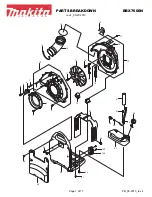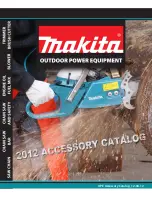
A
Abb.1
Abb.2
Abb.3
B
D
C
E
DEPTH/TRANSPORT -SUPPORT WHEEL
Switch from plow- to transport operation
Transport operation
Plow operation
Switch from transport- to plow operation
This wheel combines the function of a support wheel for plowing and a transport wheel for road travel. In transport mode, the axle
load and the load on the rear linkage on the towing vehicle are reduced.
The depth setting roll (Fig.3, E) is moved linearly via a double-acting hydraulic cylinder (1x double
acting hydr. control circuid is required), which changes and adjusts the working depth. The currently
set working depth can be read on the scale (Fig. 3 D).
There is no provision for adjusting the depth of the support wheel during plow work. To change the
depth, the plow must be raised with the hitch.
The hydraulic forward stop (A) is activated fully automatically via the hydraulic control circuit of
the plow sequence control and reduces the risk of the support wheel swivelling forward when the
plow is drawn in. The maximum effect is achieved when the plow is raised as low as possible and
the excavation angle is kept as flat as possible. The excavation angle can be changed by adjus
-
ting the position of the top link. Avoid plow-turning when the towing vehicle is standing downhill, as
this will negatively affect the function of the locking system. Do not turn the towing vehicle downhill
until the turning process has ended and the clamp of the locking system has locked.
The top link must be unhooked on the plow side and attached to the towing
vehicle before starting the journey. During transport, the top link must never
be connected to the plow, otherwise components could be damaged and
driving safety could be impaired.
Please make sure that the maximum permissible transport speed according to
the law is observed. A maximum transport speed of 10 km / h must be obser
-
ved on uneven roads. Walking speed applies when driving on paved roads on
field entrances or when driving on unpaved roads.
Bear in mind that when the towing vehicle is cornering the plow will swerve
sharply. When cornering, reduce the speed and pay particular attention to
the turning radius of the plow when it moves outwards.
Changes in the direction of travel are to be carried out slowly, as peak loads
occur on the wheel support bracket when changing from forwards to back
-
wards. If direction is changed quickly and carelessly, components could be
damaged.
¾
Lock the lower links of the rear linkage to prevent sideways
swinging.
¾
Set the cutting width to the absolute minimum (see chapter
„Cutting width setting“). With larger cutting widths, there is a
risk of a collision between the tire and the plow components.
¾
Activate the control unit of the plow turning for approx. 1 se
-
cond until the clamp of the forward lock remains in the open
position.
¾
Remove the bolt (Fig. 3 C), turn the wheel 90 ° to the transport
position and then let the bolt (Fig. 3 C) snap into the new posi
-
tion. Secure the bolt with a linch pin.
¾
Turn the spring-loaded locking bolt (Fig. 2 B) on the linkage
tower clockwise (transport position).
¾
Raise the plow with the hitch and start turning.
¾
As soon as the plow has reached top dead center (the turning
cylinder is fully retracted), the spring-loaded locking bolt (Fig.
2 B) automatically engages and fixes the plow in the middle
position. Check whether the bolt has locked correctly.
¾
Now lower the plow slowly and drive forward at the same time,
until the support wheel has swiveled in the pulling direction.
¾
Uncouple the top link from the plow and secure it to the trac
-
tor.
¾
Connect the top link to the plow, make sure that the fan hook
lock is correctly locked.
¾
Raise the plow with the hitch.
¾
Turn the spring-loaded locking bolt on the linkage tower coun
-
terclockwise (working position).
¾
Turn the plow to the left, do not finish the turning process
completely, the clamp of the forward stop should still remain in
open position.
¾
Remove the bolt (Fig. 3 C), turn the wheel 90 ° to the working
position and then let the bolt (Fig. 3 C) engage in the working
position. Secure the bolt with a linch pin.
¾
Now finish the turning process so that the locking system locks.
23
www.regent.at




































